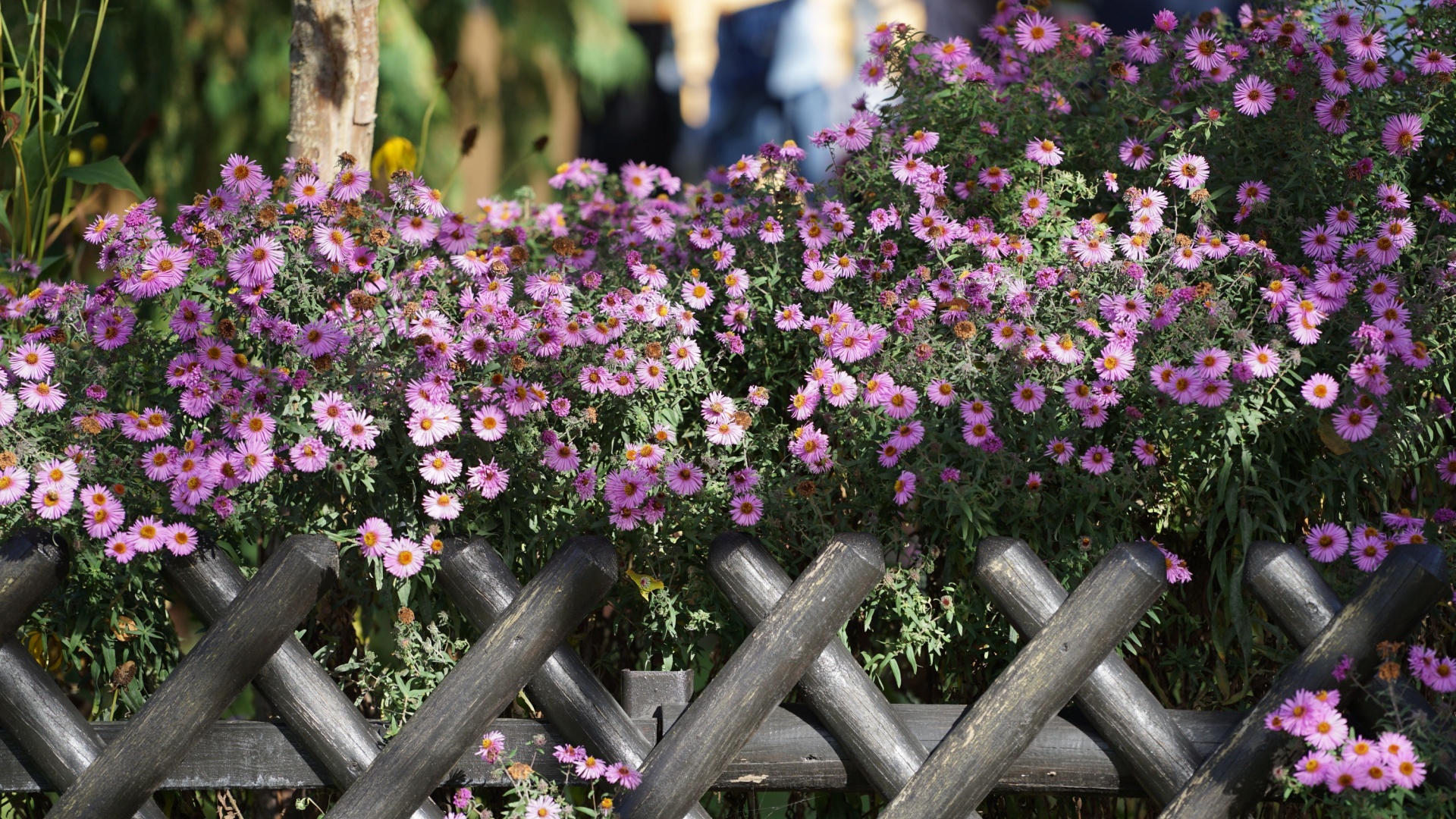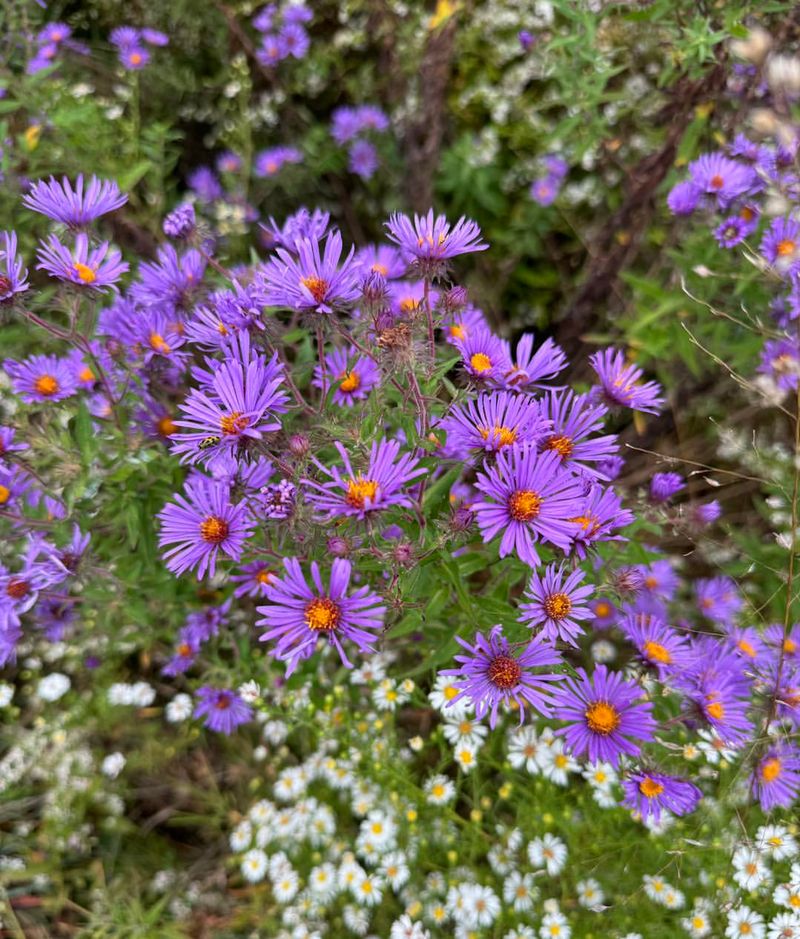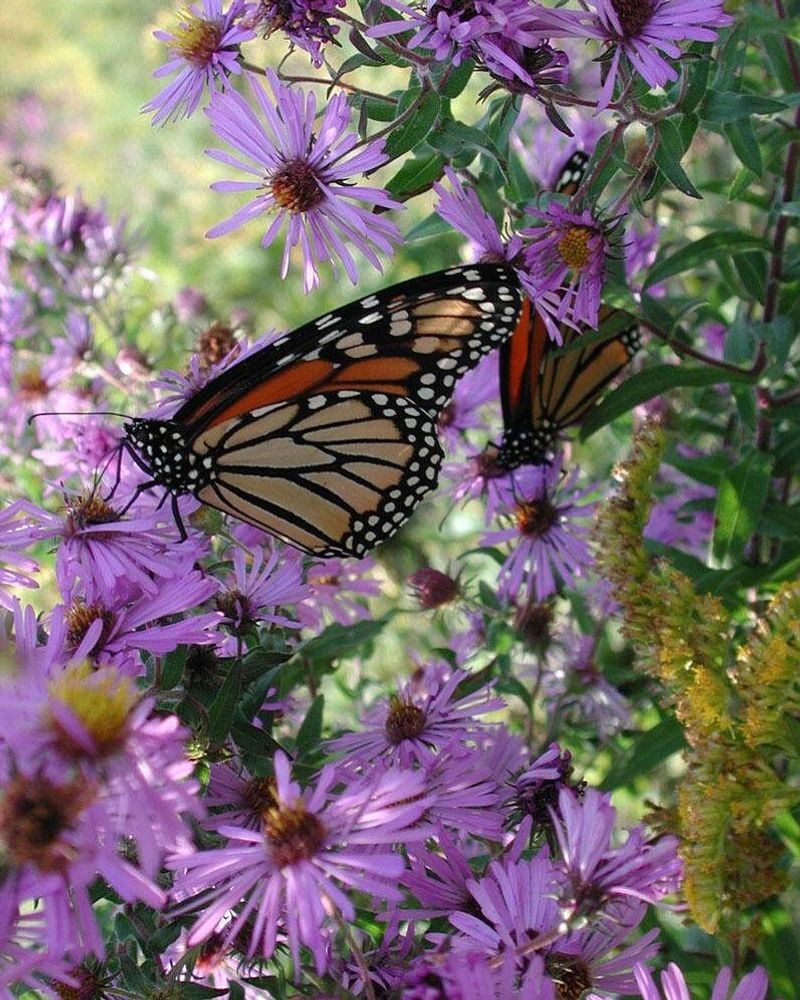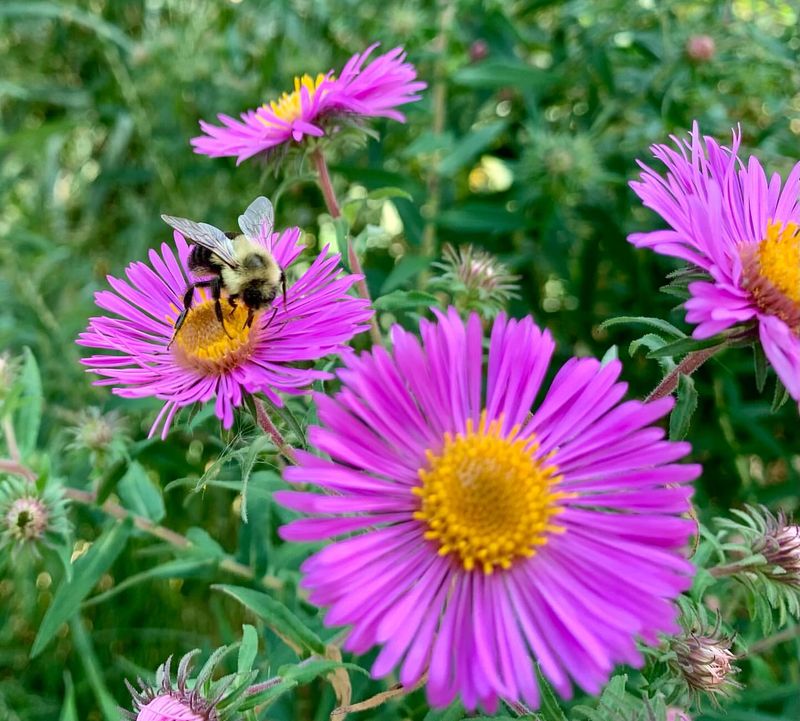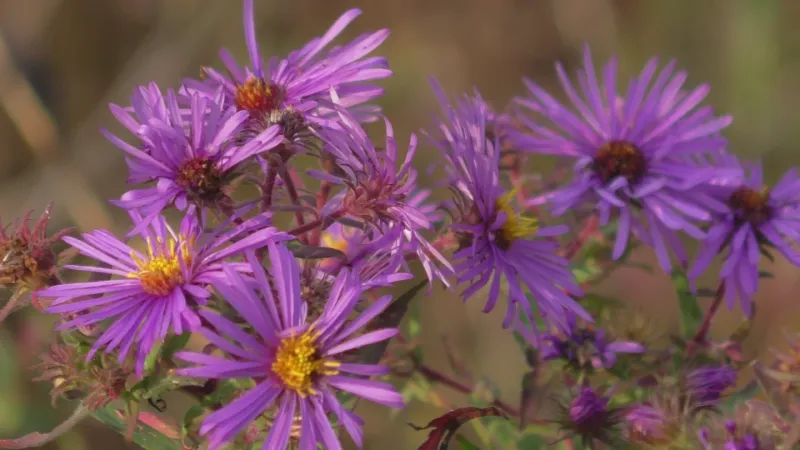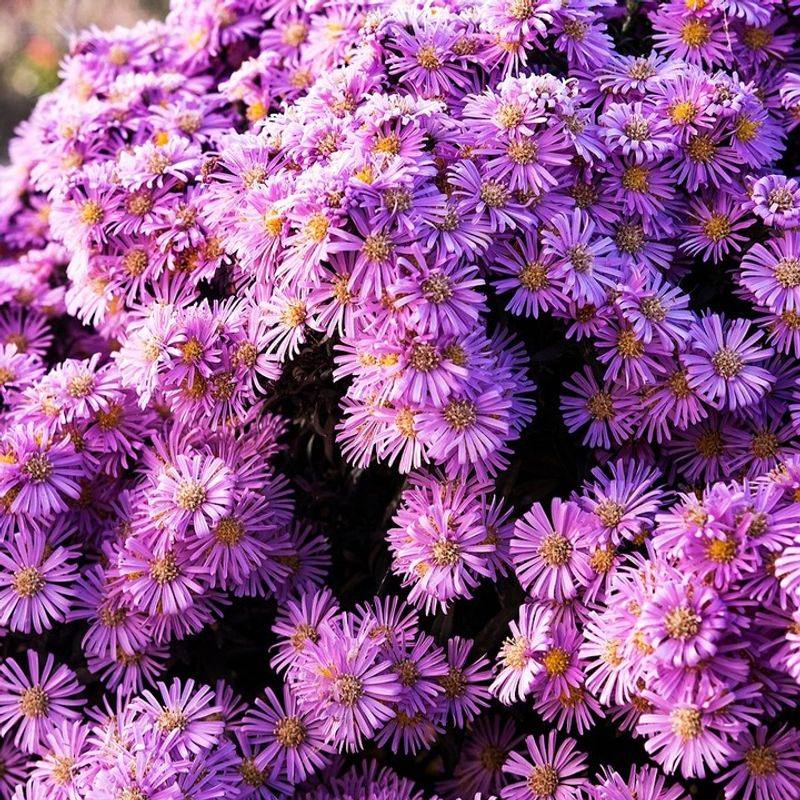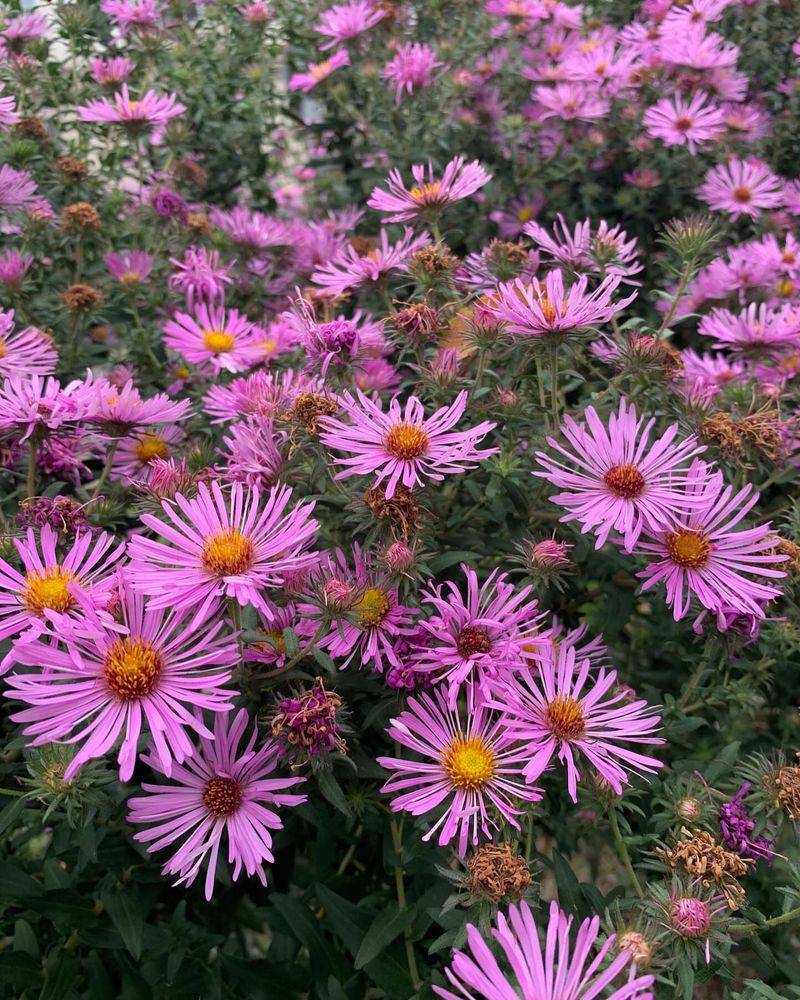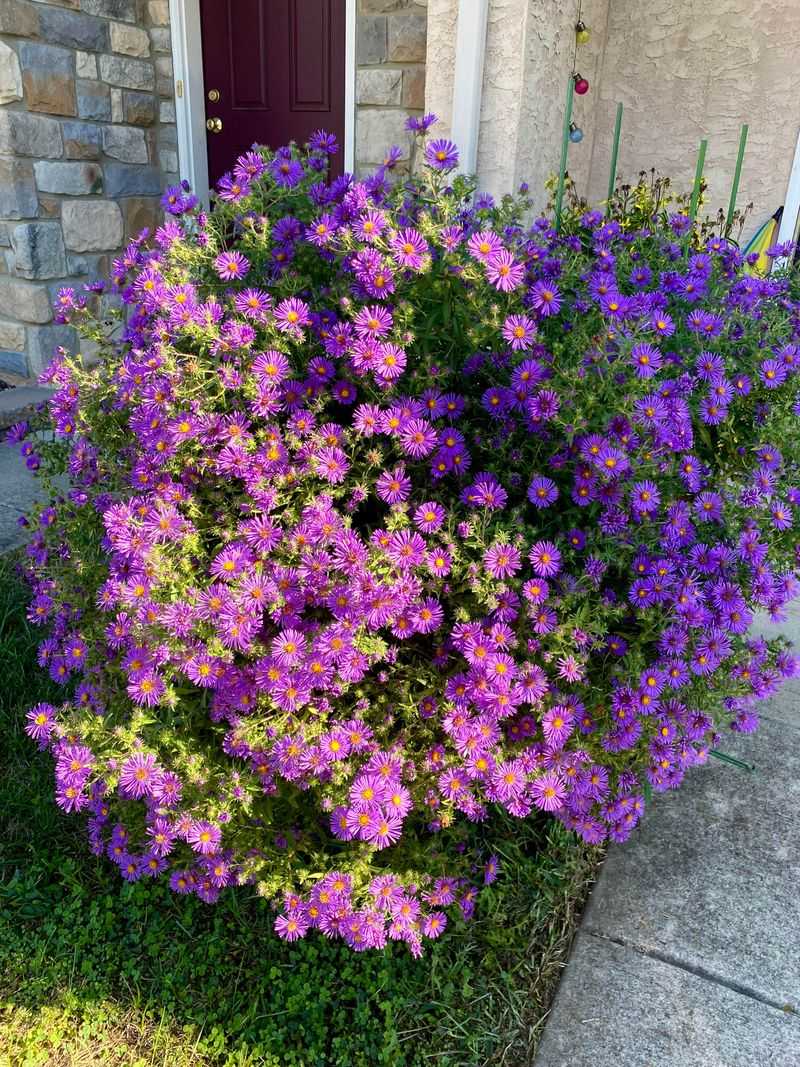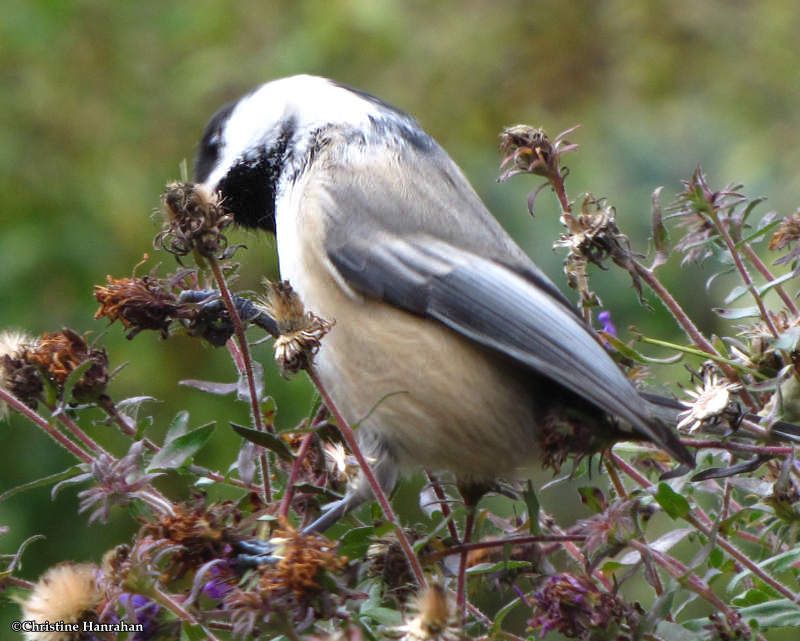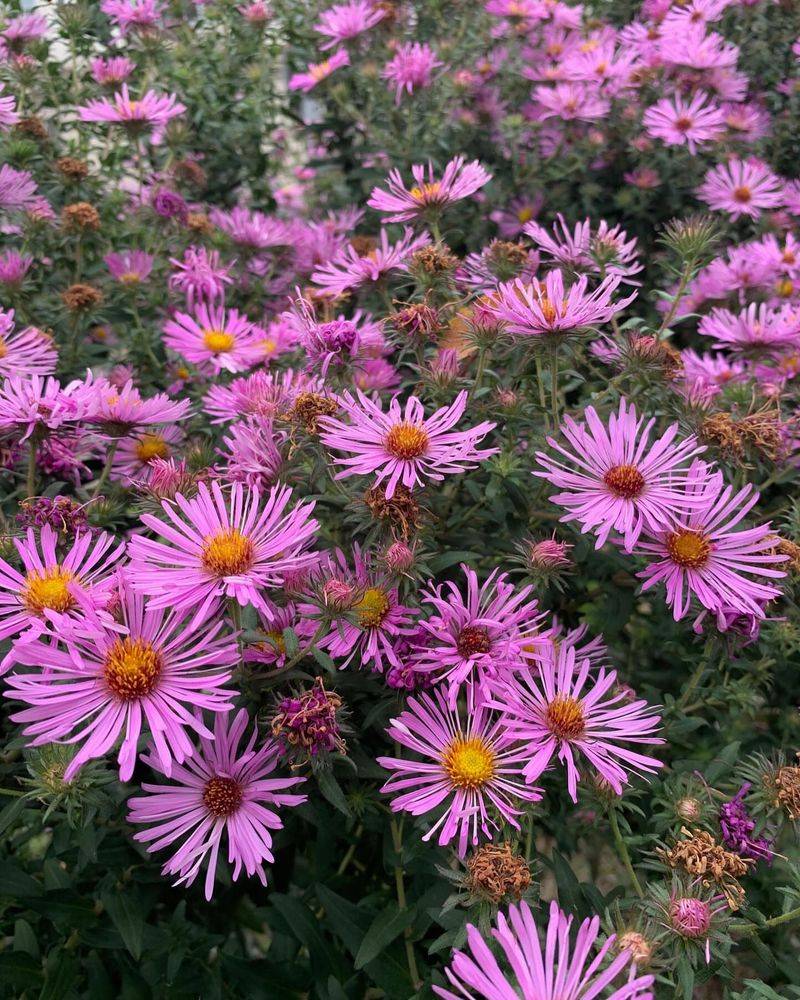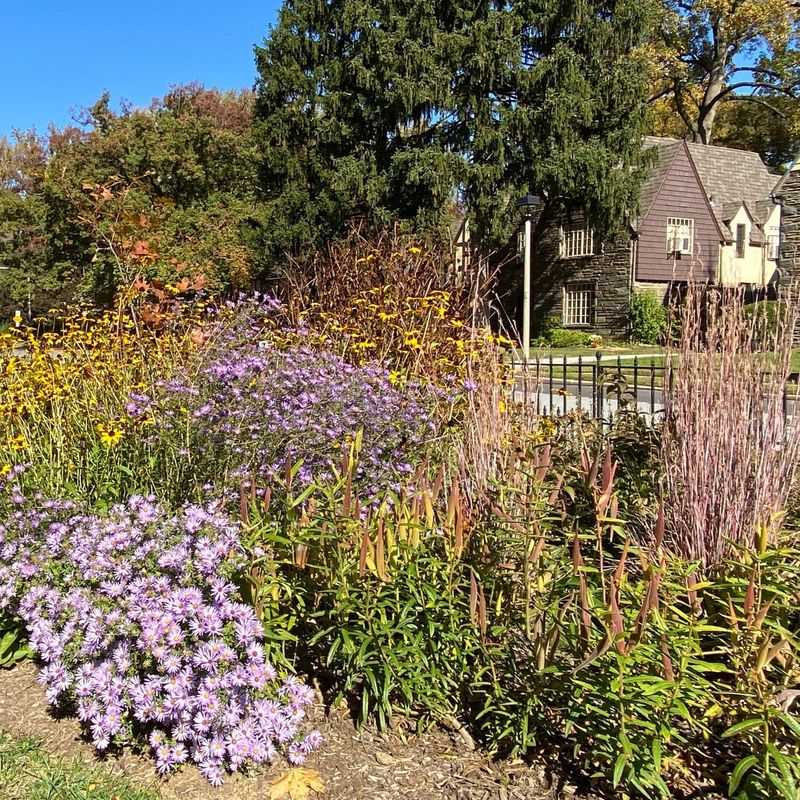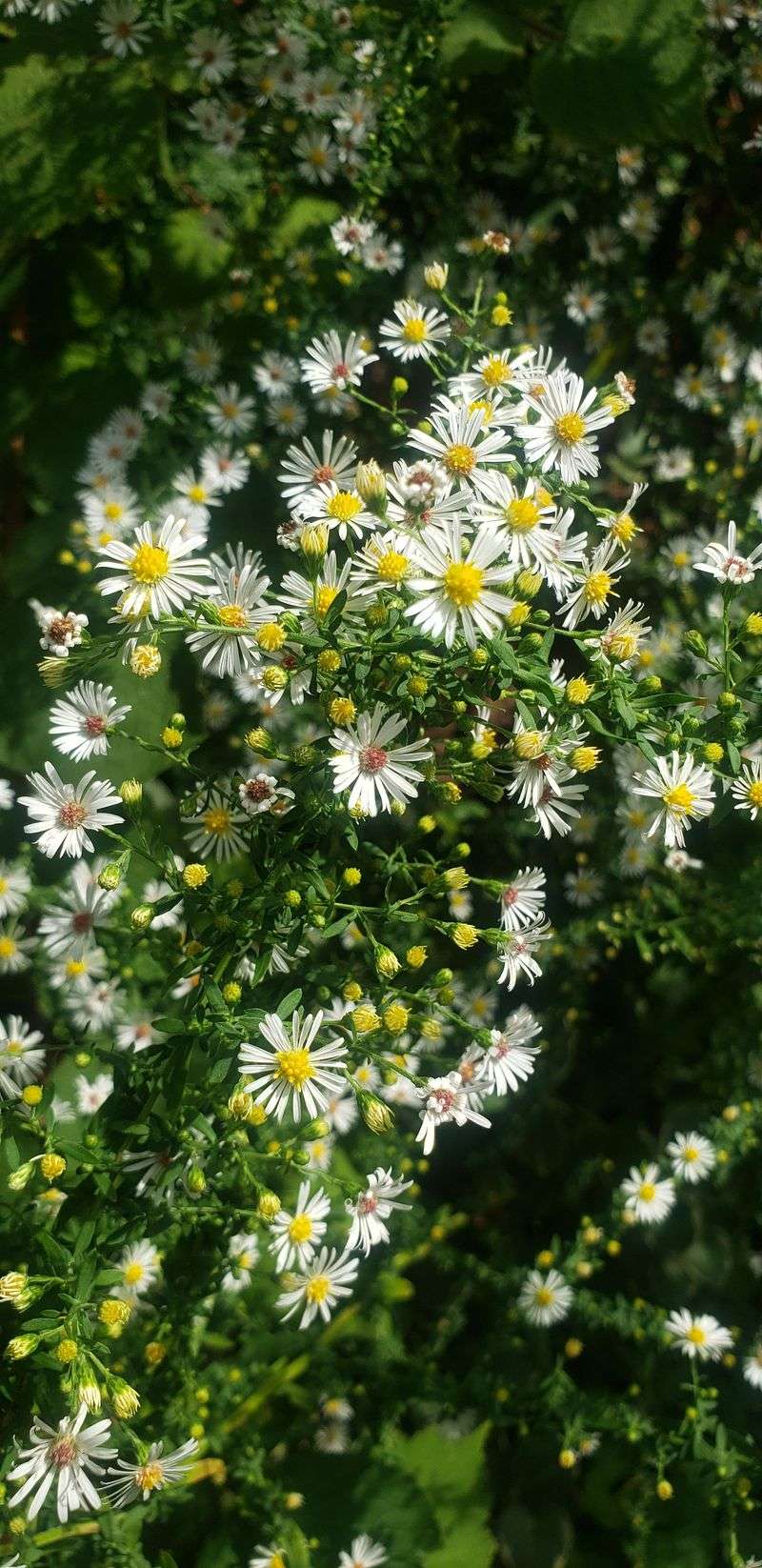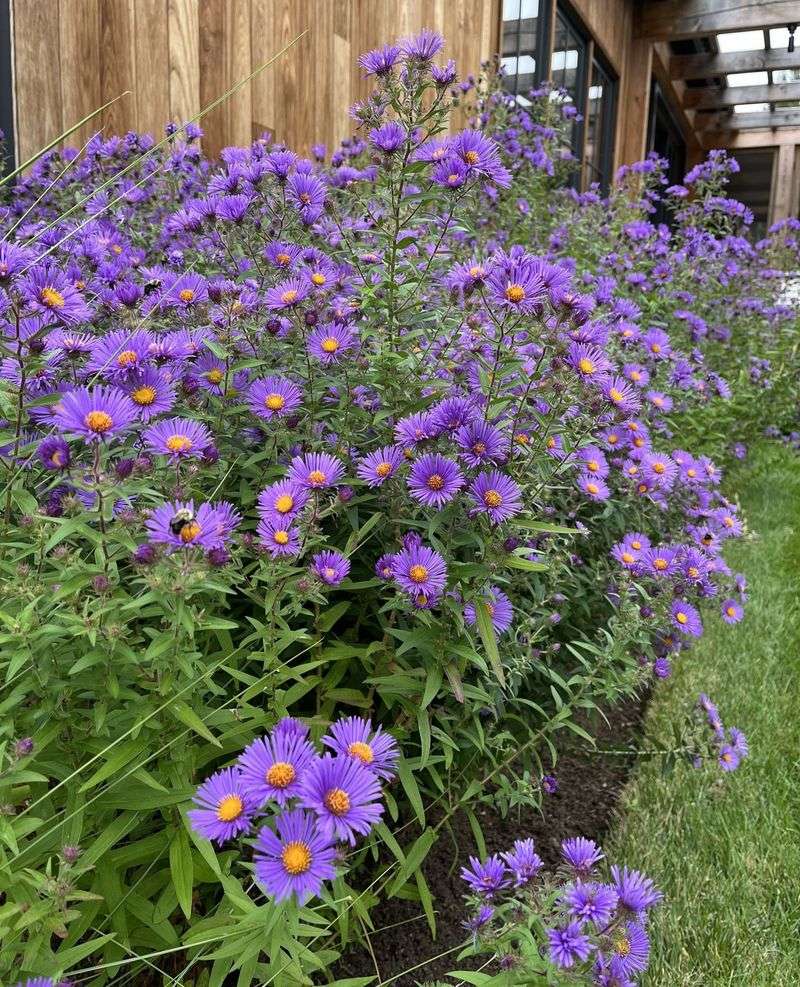When summer flowers start to fade, New England gardens need something special to keep the color going. New England Aster steps up to the challenge with its stunning purple blooms that appear just when most other flowers are calling it quits.
This native perennial not only brightens up fall gardens but also plays a crucial role in supporting local wildlife when food sources become scarce.
1. Vibrant Fall Colors When Gardens Need It Most
Just as your summer blooms start to fade, New England Aster bursts onto the scene with rich purple, pink, or blue flowers. The timing couldn’t be better! Garden color typically diminishes by late August, leaving empty spaces and brown stems.
These show-stopping blooms arrive in September and often continue well into October, providing that much-needed color punch when everything else looks tired. Your neighbors will wonder how your garden stays so lively while theirs fades away.
2. Butterfly Magnet During Migration Season
Monarchs fuel up on these flowers during their long journey south! New England Aster produces nectar exactly when butterflies need extra energy for migration. The timing is no accident – these plants evolved alongside native butterflies.
Watch your garden transform into a butterfly highway stop in September. Kids especially love spotting the colorful visitors that flock to these blooms. One aster plant can attract dozens of different butterfly species in a single afternoon.
3. Native Plant Heritage That Belongs Here
Originally growing wild throughout northeastern woodlands, New England Aster truly belongs in your garden. Unlike many exotic plants that struggle with our climate, this beauty evolved specifically for New England conditions.
Native plants connect your garden to the region’s natural history. The deep purple blooms would have greeted Native Americans and early settlers alike each fall. Growing them keeps this botanical heritage alive while creating a garden that naturally fits with the local landscape.
4. Bee-Friendly Food Source When Options Dwindle
Bees face a serious food shortage by September. Most flowers have finished blooming, yet bees still need to gather resources before winter arrives. Enter New England Aster – a literal lifesaver for these important pollinators.
The abundant nectar and pollen from these flowers help bees stock up their hives. Native bumblebees especially depend on late-season blooms. You’ll hear the happy buzzing around your asters as grateful bees find this unexpected feast during the lean times.
5. Drought-Tough Once Established
Nobody wants to baby their plants through every dry spell. Once established, New England Aster develops deep roots that tap into soil moisture even when surface soil dries out. This resilience means less watering for you!
During those September dry spells that often hit New England, these plants keep flowering while needier plants wilt. Their natural drought tolerance comes from evolving in our region’s variable climate. Your water bill and back will thank you for choosing such a self-sufficient garden addition.
6. Easy Division Creates Free Plants
Free plants? Yes please! After a few years, New England Aster forms expanding clumps that are perfect for dividing. Each division grows into a full-sized plant, saving you money at the garden center.
Spring is the perfect time to dig and divide. Simply use a garden fork to lift the clump, then separate it into smaller sections with your hands or a knife. Share extras with friends or expand your own garden. Within weeks, these divisions will establish themselves and bloom by fall.
7. Perfect Height For Garden Backgrounds
Standing 3-6 feet tall at maturity, these statuesque beauties create the perfect backdrop for shorter plants. Their height fills that awkward middle zone between short flowers and taller shrubs or trees.
Place them behind shorter perennials like black-eyed Susans or coreopsis for a layered look. The vertical interest draws the eye upward, making your garden feel larger and more designed. Their sturdy stems rarely need staking, maintaining their upright position even through fall storms.
8. Disease Resistance Means Less Hassle
Garden maintenance can be a real chore when plants get sick. Luckily, New England Aster shrugs off most common plant diseases that plague other perennials. Their natural resistance means less spraying and fussing for you.
Unlike fussy roses or mildew-prone phlox, these tough natives rarely suffer from fungal issues even in humid New England summers. Their resilience comes from thousands of years adapting to local conditions. You’ll spend less time treating problems and more time enjoying those gorgeous purple blooms.
9. Wildlife Habitat That Supports Birds
Birds flock to gardens with New England Aster! Goldfinches and other seed-eating birds feast on the seedheads if left standing through fall. The dense growth also provides shelter for small birds hiding from predators.
Even after the flowers fade, the plants keep supporting wildlife. The seeds feed birds through winter if you leave the stalks standing. Insect-eating birds like chickadees hunt among the stems for bugs. Your garden becomes a bird sanctuary with just this one plant addition.
10. Long-Lived Perennial That Increases In Value
Unlike short-lived perennials that fizzle out after a few seasons, New England Aster keeps performing year after year. A single plant can thrive for decades, becoming more valuable with age as it increases in size and bloom power.
Many gardeners report their asters outliving other perennials in the garden. The initial planting cost spreads over many years of enjoyment. Unlike annuals that need replacing every spring, this investment continues paying colorful dividends each September without repeated purchases.
11. Deer Resistance Saves Your Hard Work
Nothing’s more frustrating than watching deer devour your garden overnight! The slightly fuzzy leaves and aromatic foliage of New England Aster naturally repel these garden munchers. While no plant is completely deer-proof, asters rank low on their preferred menu.
Deer typically browse other plants first, leaving your asters intact. The hairy stems and slightly bitter taste make them unappealing compared to hostas or daylilies. Your September garden display stays intact even with deer pressure, saving both your view and your gardening sanity.
12. Variety Of Colors Beyond Purple
While the classic deep purple is stunning, New England Aster offers more color options than many realize. Modern varieties come in pink, blue, white, and even bicolor patterns. This palette variety helps match any garden color scheme.
‘Alma Potschke’ dazzles with hot pink blooms, while ‘Hella Lacy’ offers true-blue flowers rarely found in fall gardens. ‘Wedding Lace’ brings pristine white for elegant garden corners. Mix different colors together for a painter’s palette effect, or stick with one shade for bold impact.
13. Companion To New England Fall Foliage
The rich purple flowers create magical combinations with autumn’s changing leaves. Plant near trees and shrubs with red or orange fall color for nature’s perfect color wheel pairing. Sugar maples and New England Aster were made for each other!
The contrast between golden leaves and purple flowers creates Instagram-worthy garden moments. Even as trees begin to drop leaves, the asters keep the show going. This natural combination celebrates everything special about New England autumns, bringing the region’s famous fall palette right into your yard.
14. Cut Flowers That Last In Arrangements
Bring the garden inside! New England Aster stems make excellent cut flowers, lasting up to a week in vases. Their sturdy stems and long-lasting blooms create beautiful fall arrangements when other cutting flowers are scarce.
Cut stems in the morning when hydration is highest. Remove lower leaves that would sit below the waterline to prevent rot. Combine with ornamental grasses, seedheads, and fall branches for stunning seasonal displays. A single established plant produces enough stems for both garden enjoyment and indoor bouquets.

